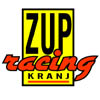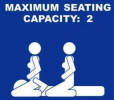15 prispevkov
Stran 1 od 1
-

Fast-B - Novinec
- Prispevkov: 318
- Pridružen: Ne sep 14, 2003 3:57 pm
BMW in Chris Bangle
Zanima me vašo osebno mnenje o šefu oblikovanja Chrisu Banglu? Se vam zdi njegov stil? BI ga najraje ubili...
-

Pugi - Moderator foruma
- Prispevkov: 6195
- Pridružen: Ne avg 24, 2003 8:21 pm
- Moongoose
- Nov uporabnik
- Prispevkov: 98
- Pridružen: Pe sep 05, 2003 8:46 pm
-

Fast-B - Novinec
- Prispevkov: 318
- Pridružen: Ne sep 14, 2003 3:57 pm
-

menjekul - Poznavalec foruma
- Prispevkov: 2635
- Pridružen: Sr jan 01, 2003 8:14 pm
- orlach
- Nov uporabnik
- Prispevkov: 68
- Pridružen: Sr jan 22, 2003 3:50 pm
na kratko...mislim, da je to edina prava pot! pravzaprav moraš ta dizajn razumet.Sedmica res ni najbolj posrečena, ampak ne dizajn kot stil, temveč porporcioniranje oblike same...ampak brez sedmice ni petice itd...ta pa je trenutno najbolj impresiven avtomobil na cesti kar se tiče same pojavnosti...vsaj zame.Jaz se zlahka identificiram s tem oblikovanjem in tudi ni dolgo trajalo, da sem se ga sprejel...navadiš pa se ga, ko ga razumeš, tudi če ne veš zakaj. Edino kar pogrešam je tipična BMW-jevska notranjost, vsaj kar se novejših modelov tiče. Zame še vedno ostaja edino pravo...BMW...poleg tega pa še vedno postavlja nove nivoje voznih lastnosti.Čakamo na M-modele!!! sladko čakanje!
+BMW+
-

dobek - Mojster foruma
- Prispevkov: 4310
- Pridružen: So mar 02, 2002 5:12 pm
- Kraj: MarburgAnDerDrau
kaj vem. njegov stil ni ravno 100% po mojem okusu, je pa dokaj blizu.
je pa sam v intervjuju povedal, da to ni cisto njegov dizajn, ampak dizajn njegovega studia, kjer ma delavce s skoraj celega sveta...
je pa tako, da ne glede na to, da ga toliko ljudi zabija, bmw po dolgih letih spet pise crne stevilke, torej se le prodaja...kar mislim, da dosti pove...
je pa sam v intervjuju povedal, da to ni cisto njegov dizajn, ampak dizajn njegovega studia, kjer ma delavce s skoraj celega sveta...
je pa tako, da ne glede na to, da ga toliko ljudi zabija, bmw po dolgih letih spet pise crne stevilke, torej se le prodaja...kar mislim, da dosti pove...

Ce v svojih postih slucajno koga uzalim - prisezem, da je bilo nalasc!
-

Nixxon - Mojster foruma
- Prispevkov: 3646
- Pridružen: Ne jul 27, 2003 10:42 am
- Kraj: Vrhnika
Tip je totalen car. Jest sem bral že veliko intervjujev z njim in v vseh sem videl da tip obvlada svoje delo.
Vsi novi modeli smo mi super, dobim kar mravljince po celem telesu ko vidim tanovo petico na cesti. Komaj čakam da vidim 6ko v živo.
Moramo razumeti, da se je dotakratna dizajn smernica že rahlo izpela in bi težko naredili avtomobile, ke bi po obliki presegli predhodnike. Zato je bla edina rešitev radikalna sprememba, ki je pomoje prava. In če je BMW ena redkih firm, ki ji prodaja v Ameriki strmo narašča (VW ful pada, tko tud baje Merc), kot tudi v Evropi, potem to pomeni, da so na pravi poti (OK, ni vse dizajn, ostalo je tud nepremagljivo).
BMW ROOOOLS!
Vsi novi modeli smo mi super, dobim kar mravljince po celem telesu ko vidim tanovo petico na cesti. Komaj čakam da vidim 6ko v živo.
Moramo razumeti, da se je dotakratna dizajn smernica že rahlo izpela in bi težko naredili avtomobile, ke bi po obliki presegli predhodnike. Zato je bla edina rešitev radikalna sprememba, ki je pomoje prava. In če je BMW ena redkih firm, ki ji prodaja v Ameriki strmo narašča (VW ful pada, tko tud baje Merc), kot tudi v Evropi, potem to pomeni, da so na pravi poti (OK, ni vse dizajn, ostalo je tud nepremagljivo).
BMW ROOOOLS!
-

Nixxon - Mojster foruma
- Prispevkov: 3646
- Pridružen: Ne jul 27, 2003 10:42 am
- Kraj: Vrhnika
Aja, tukaj imam intervju, ki ga je dal za revijo Auto & Design, ki je vodilna revija na svetu kar se tiče oblikovanja avtomobilov. Je v angleščini, tko da kdor hoče:
--------------------------------------
The presentation of the new BMW 5-Series, confirms the new, characterful product strategy German brand is adopting. Chris Bangle, BMW's Director of Design, and the author of its revamped design policy, explains the key features of the firm's new model to Auto & Design,
-What were the underlying premises of the design for the new 5-Series?
BMW cars have always shared the same general outline, so that they all looked pretty much alike. Today, however, there's no longer any need to make them all look alike, as if there was just one 'standard model in bigger and smaller versions. Changes in the market and on the design front are allowing us to distinguish between one series and another and to make each one identifiable at a glance.
Moreover, the fact that engineering content, on-board equipment and Cx figures are all influenced by size, has its own impact on the exterior lines, which are always closely related to what lies beneath them. That does not mean there's no connection between the various cars in the BMW range.
It's just like any family. There's a shared character, a sense of belonging, but each family member has its own unique, one-off identity. On the 5-Series, the influence of other cars in our range is clear for all to see but we've also developed its own 5-Series characteristics. The new 5-Series is more agile, but we've also endowed it with a more solid presence, believing that the previous version was a bit too "timid" for its class.
-What are its distinguishing features?
I don't think you can point to any particular detail. It's more a question of a different interpretation, a unique way of presenting the values of the brand and the series, Take the shape of the tail-lights that help to form the identity of the car. Or the classic BMW kidneys that are common to all BMWs of course, but are given a distinctive character here, because they are turned in slightly with respect to the bonnet, so that the front view is slightly sportier, perhaps a bit less "stern" than the "7-Series" version. Then again, the headlamps are clearly BMW, but also distinctively 5-Series.
-The new version is bigger than its predecessor, in order as you said, to make it look more forceful. What were the design implications?
We worked on the surfaces, especially on the sides, to make it look lighter than its size would suggest. Then, while on the 7-Series, the line along the side creates a positive curve above the waistline, to instigate a series of reflections that accentuate its volume, on the 5-Series we've created a concave surface above the waistline, which makes the car look less weighty, more agile and creates a chiaroscuro effect. That stirs up the waistline itself and the shape of the roof, which is taller than on the previous 5-Series.
So a lot of work on the surfaces?
I think the 5-Series has a lot to say about the relationship betwwn the use of masses, the design of surfaces and the wayboth relate to their surroundings, interacting with the light, which is used as a design element that can create reflections, highlight or reduce the impact of a cut or an angle. In that sense, the 5-Series is unique, perhaps the first car of the new era. The 7 is and must be more "classical", while the Z4 is obviously more extreme. And, with its new, more balanced shape, the 5-Series is more independent. That's the result of our use of geometries, masses and reflections to outline, clothe and express what lies beneath. Seen in motion on the road, the car creates a sensation of a new development, as if it stands for the moment when you turn a page and start a new chapter. But at the same time, it is not at all aggressive, never pointlessly overstated.
How do you see the future of car design?
There's plenty of room for change, partly in response to new constraints, like restrictions designed for the safety of pedestrians or the new crash test regulations. Automotive architecture is constantly evolving and it's the designer's job to keep up with all those developments: aesthetic, formal and technological.
----------------------
--------------------------------------
The presentation of the new BMW 5-Series, confirms the new, characterful product strategy German brand is adopting. Chris Bangle, BMW's Director of Design, and the author of its revamped design policy, explains the key features of the firm's new model to Auto & Design,
-What were the underlying premises of the design for the new 5-Series?
BMW cars have always shared the same general outline, so that they all looked pretty much alike. Today, however, there's no longer any need to make them all look alike, as if there was just one 'standard model in bigger and smaller versions. Changes in the market and on the design front are allowing us to distinguish between one series and another and to make each one identifiable at a glance.
Moreover, the fact that engineering content, on-board equipment and Cx figures are all influenced by size, has its own impact on the exterior lines, which are always closely related to what lies beneath them. That does not mean there's no connection between the various cars in the BMW range.
It's just like any family. There's a shared character, a sense of belonging, but each family member has its own unique, one-off identity. On the 5-Series, the influence of other cars in our range is clear for all to see but we've also developed its own 5-Series characteristics. The new 5-Series is more agile, but we've also endowed it with a more solid presence, believing that the previous version was a bit too "timid" for its class.
-What are its distinguishing features?
I don't think you can point to any particular detail. It's more a question of a different interpretation, a unique way of presenting the values of the brand and the series, Take the shape of the tail-lights that help to form the identity of the car. Or the classic BMW kidneys that are common to all BMWs of course, but are given a distinctive character here, because they are turned in slightly with respect to the bonnet, so that the front view is slightly sportier, perhaps a bit less "stern" than the "7-Series" version. Then again, the headlamps are clearly BMW, but also distinctively 5-Series.
-The new version is bigger than its predecessor, in order as you said, to make it look more forceful. What were the design implications?
We worked on the surfaces, especially on the sides, to make it look lighter than its size would suggest. Then, while on the 7-Series, the line along the side creates a positive curve above the waistline, to instigate a series of reflections that accentuate its volume, on the 5-Series we've created a concave surface above the waistline, which makes the car look less weighty, more agile and creates a chiaroscuro effect. That stirs up the waistline itself and the shape of the roof, which is taller than on the previous 5-Series.
So a lot of work on the surfaces?
I think the 5-Series has a lot to say about the relationship betwwn the use of masses, the design of surfaces and the wayboth relate to their surroundings, interacting with the light, which is used as a design element that can create reflections, highlight or reduce the impact of a cut or an angle. In that sense, the 5-Series is unique, perhaps the first car of the new era. The 7 is and must be more "classical", while the Z4 is obviously more extreme. And, with its new, more balanced shape, the 5-Series is more independent. That's the result of our use of geometries, masses and reflections to outline, clothe and express what lies beneath. Seen in motion on the road, the car creates a sensation of a new development, as if it stands for the moment when you turn a page and start a new chapter. But at the same time, it is not at all aggressive, never pointlessly overstated.
How do you see the future of car design?
There's plenty of room for change, partly in response to new constraints, like restrictions designed for the safety of pedestrians or the new crash test regulations. Automotive architecture is constantly evolving and it's the designer's job to keep up with all those developments: aesthetic, formal and technological.
----------------------
- Martin
- Novinec
- Prispevkov: 468
- Pridružen: Sr jan 08, 2003 1:05 pm
- Kraj: Republika Palma di cocco
-

germancarfan - Novinec
- Prispevkov: 102
- Pridružen: To sep 16, 2003 8:58 pm
- Kraj: kranj
-

Tauru5 - Nov uporabnik
- Prispevkov: 55
- Pridružen: Po sep 22, 2003 2:45 pm
- Kraj: Maribor
-

.::GTR::. - Uporabnik
- Prispevkov: 1156
- Pridružen: So mar 15, 2003 1:59 pm
- Kraj: Gorenjska
- rossi_jr
- Nov uporabnik
- Prispevkov: 24
- Pridružen: Po sep 15, 2003 6:33 pm
- Kraj: kranj
-

Nixxon - Mojster foruma
- Prispevkov: 3646
- Pridružen: Ne jul 27, 2003 10:42 am
- Kraj: Vrhnika
15 prispevkov
Stran 1 od 1
Kdo je prisoten
Po forumu brska: Google [Bot] in 5 gostov




